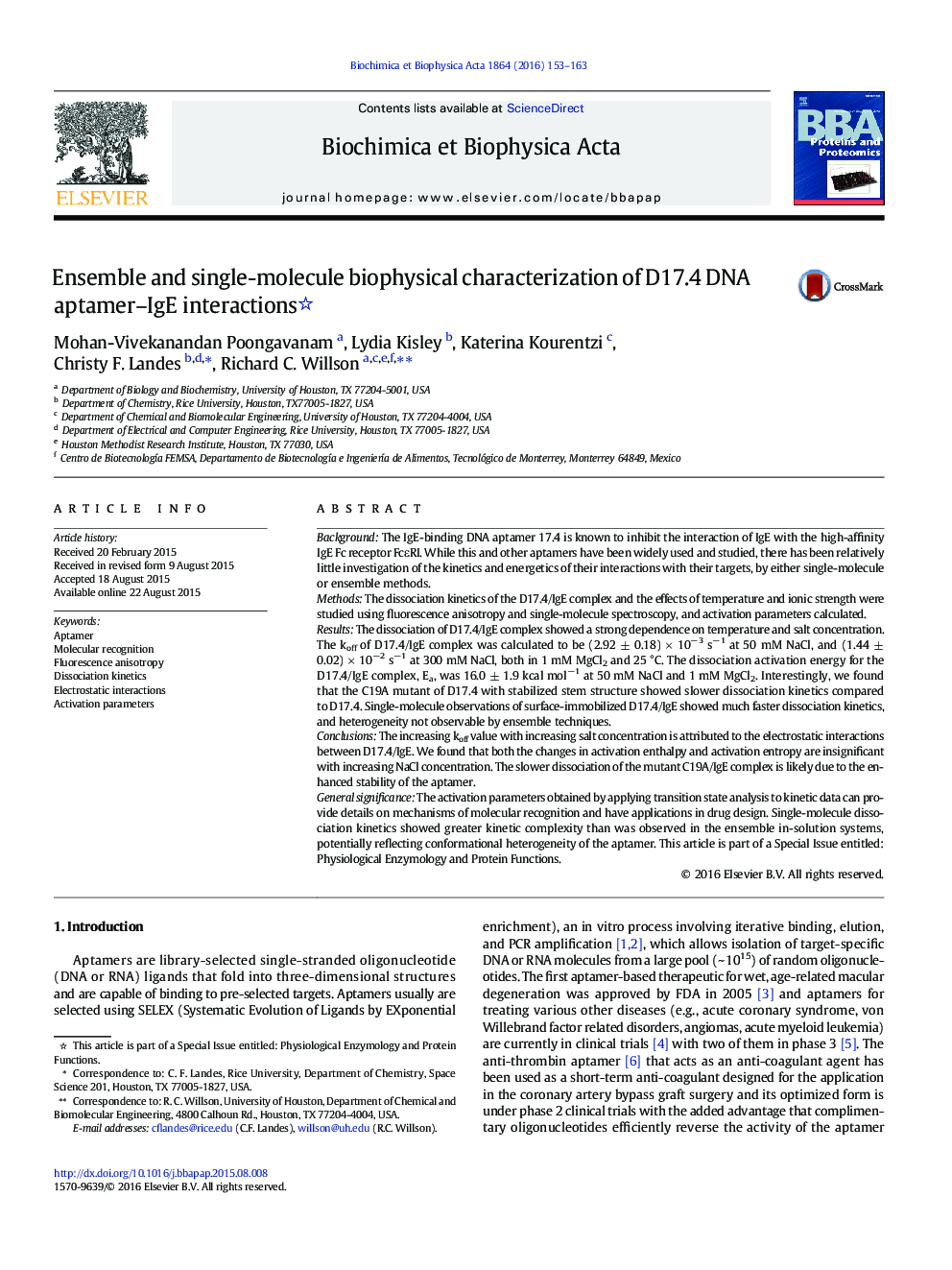| Article ID | Journal | Published Year | Pages | File Type |
|---|---|---|---|---|
| 1178215 | Biochimica et Biophysica Acta (BBA) - Proteins and Proteomics | 2016 | 11 Pages |
•We studied D17.4 aptamer/IgE association by ensemble and single-molecule methods.•Changes in activation enthalpy and entropy with NaCl concentration are small.•The C19A mutant of D17.4 showed slower dissociation kinetics than D17.4.•Single-molecule methods revealed heterogeneity not observable by ensemble methods.
BackgroundThe IgE-binding DNA aptamer 17.4 is known to inhibit the interaction of IgE with the high-affinity IgE Fc receptor FcεRI. While this and other aptamers have been widely used and studied, there has been relatively little investigation of the kinetics and energetics of their interactions with their targets, by either single-molecule or ensemble methods.MethodsThe dissociation kinetics of the D17.4/IgE complex and the effects of temperature and ionic strength were studied using fluorescence anisotropy and single-molecule spectroscopy, and activation parameters calculated.ResultsThe dissociation of D17.4/IgE complex showed a strong dependence on temperature and salt concentration. The koff of D17.4/IgE complex was calculated to be (2.92 ± 0.18) × 10−3 s−1 at 50 mM NaCl, and (1.44 ± 0.02) × 10−2 s−1 at 300 mM NaCl, both in 1 mM MgCl2 and 25 °C. The dissociation activation energy for the D17.4/IgE complex, Ea, was 16.0 ± 1.9 kcal mol−1 at 50 mM NaCl and 1 mM MgCl2. Interestingly, we found that the C19A mutant of D17.4 with stabilized stem structure showed slower dissociation kinetics compared to D17.4. Single-molecule observations of surface-immobilized D17.4/IgE showed much faster dissociation kinetics, and heterogeneity not observable by ensemble techniques.ConclusionsThe increasing koff value with increasing salt concentration is attributed to the electrostatic interactions between D17.4/IgE. We found that both the changes in activation enthalpy and activation entropy are insignificant with increasing NaCl concentration. The slower dissociation of the mutant C19A/IgE complex is likely due to the enhanced stability of the aptamer.General significanceThe activation parameters obtained by applying transition state analysis to kinetic data can provide details on mechanisms of molecular recognition and have applications in drug design. Single-molecule dissociation kinetics showed greater kinetic complexity than was observed in the ensemble in-solution systems, potentially reflecting conformational heterogeneity of the aptamer. This article is part of a Special Issue entitled: Physiological Enzymology and Protein Functions.
